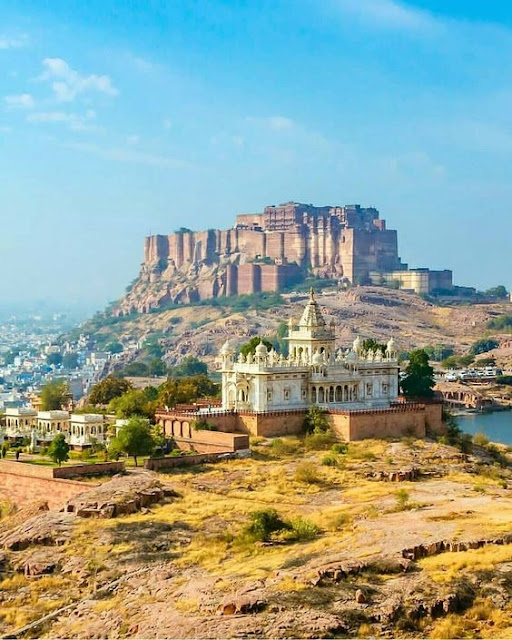Chhatrapati Shivaji Maharaj Terminus
Chhatrapati Shivaji Maharaj Terminus
Dhobi Talao, Chhatrapati Shivaji Terminus Area, Fort, Mumbai, Maharashtra
One of the finest examples of Indo-Gothic Revival architecture, Victoria Terminus or Chattrapati Shivaji Terminus is one of the busiest railway stations in India. The construction was completed in 1888 and the design of the building is attributed to Fredrick William Stevens. The station has become an icon of the city of Mumbai and is one of its most recognizable landmarks.
The city where dreams become true. It has wonderful facilities for restrooms, food, etc. It has departure services also. It is the of the busiest railway station in Asia. It was created by the British and the name was kept as BT (Bictoriya terminus). And then after the name was replaced by CST and now it is known as CSMT. All types of service are available here 24hrs. There is a train for local and national also.
Beautiful, vintage station. You can get a train for harbor and central line. Places you can go from here is Marine drives, Manish market, Malabar hill, India gate, chappati
, Elphinstone College, Shivaji Maharaj stingray, Jahangir art gallery and many other interesting places.
, Elphinstone College, Shivaji Maharaj stingray, Jahangir art gallery and many other interesting places.
The Chhatrapati Shivaji Terminus, formerly known as Victoria Terminus Station, in Mumbai, is an outstanding example of Victorian Gothic Revival architecture in India, blended with themes deriving from Indian traditional architecture. The building, designed by the British architect F. W. Stevens, became the symbol of Bombay as the ‘Gothic City’ and the major international mercantile port of India. The terminal was built over 10 years, starting in 1878, according to a High Victorian Gothic design based on late medieval Italian models. Its remarkable stone dome, turrets, pointed arches and the eccentric ground plan is close to traditional Indian palace architecture.
It is an outstanding example of the meeting of two cultures, as British architects worked with Indian craftsmen to include Indian architectural tradition and idioms thus forging a new style unique to Bombay.
This is one of the finest functional Railway Station buildings in the world and is used by more than three million commuters daily. This property is an outstanding example of the Victorian Gothic Architectural Revival in India, blended with the themes derived from Indian Traditional Architecture. Its remarkable stone dome, turrets, pointed arches and the eccentric ground plan is close to traditional Indian palace architecture. It is an outstanding example of the fusion of two cultures, as British architects worked with Indian craftsmen to include Indian architectural tradition and idioms thus forging a new style unique to Mumbai.
Chhatrapati Shivaji Terminus is an outstanding example of late 19th-century railway architecture in the British Commonwealth, characterized by the Victorian Gothic Revival and traditional Indian features, as well as its advanced structural and technical solutions.
However, internal modifications and external additions affected a moderate change in authenticity. These changes were generally reversible and have since listing been reverted to bring the building and surroundings to its original glory.
The Mumbai Metropolitan Regional Development Authority (MMRDA) is working on the Mumbai Urban Transportation Plan, aiming at upgrading the transport network. On the local level, there will be changes in the management system, which will have consequences for the area of the eastern waterfront of the city. The Terminus, which is situated in this area is in a strategic position, and will therefore also be affected by these developments.
During the British rule, the station was eventually redesigned and rebuilt by F.W. Stevens, who named it as Victoria Terminus. The station got its name from the then reigning royal, Queen Victoria. The construction of the station took 10 years to complete and was opened to the Queen on the date of her Golden Jubilee in 1887. At the time, the building was the most expensive structure in Mumbai costing 260,000 Sterling Pounds. The station was built to handle main rail traffic and in 1929, a new station and an administrative headquarters were built by the Central Railway. In 1996, the Minister of Railways, Suresh Kalmadi, changed the name of the station to Chhatrapati Shivaji Terminus (CST).
The entrance of the Chhatrapati Shivaji terminus is flanked by figures of a lion and a tiger representing the two countries-great Britain and India. The main structure is made of sandstone and limestone, and the interiors of the station are lined with high-quality Italian marble. Apart from the 18 railway lines, the CST also houses the main headquarters, the Star Chamber, grotesques and the North Wing.
The Chhatrapati Shivaji Terminus is one of the most treasured landmarks in the city. If you decide to visit Mumbai, then make sure that the CST is on your must-see list. Well-connected to all major destinations of India, the CST is not only a historical but is also one of the biggest commercial symbols of Mumbai.






Comments